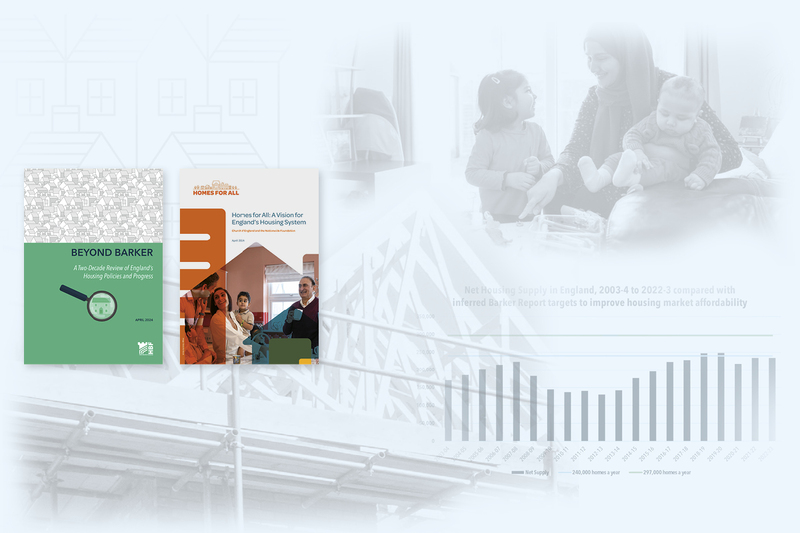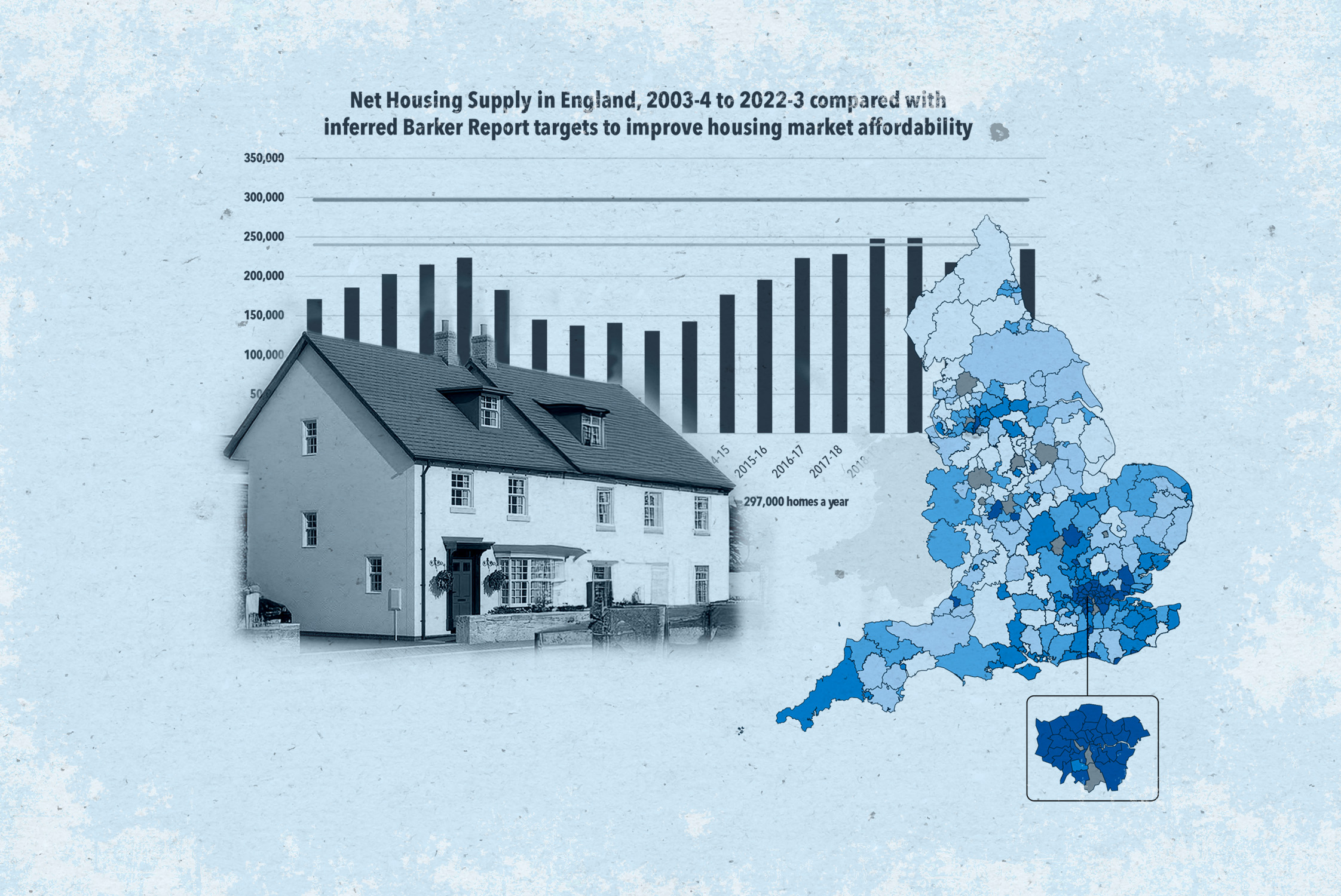You are viewing 1 of your 1 free articles
Latest housing research: 20 years on from the Barker Review
Thinkhouse Editorial Panel member Anna Clarke highlights two must-read reports that set out a 2024 vision for housebuilding, and how to achieve it

Anna is Director of Policy and Public Affairs at The Housing Forum. This role that involves bringing members together to increase our ...more
This month, two new reports were submitted to the Thinkhouse library, both of which take a wide-angle look at the housing problems facing the country and ask what needs to be done to fix them.
Having started my career in housing in 2004, as the Review of Housing Supply by Kate Barker was freshly published, I enjoyed reading Beyond Barker, the Home Builders Federation’s (HBF) review of the past 20 years of housing policy.
For those newer to the sector, the Barker Review set out clearly that a shortage of housing was causing real-term growth in house prices, and that this was undesirable.
Ms Barker (now Dame Kate) was realistic about the enormous challenges of getting the UK’s real house-price growth down from 2.7% per year over the past 20 years at the time of the review. In order to achieve 1.1% of house-price growth (the EU average at the time), almost 300,000 new homes would have been required per year. This represented a significant increase on the rate of housebuilding at the time.
In fact, the Barker report’s housebuilding estimates should have been even higher, as the population has grown much faster than the projections Dame Kate used at the time. The review went on to make recommendations on how to increase housing supply.
The HBF’s new report revisits all of these recommendations and looks at which were implemented. In many ways, it is a depressing read, as it concludes that, of the 36 recommendations, 11 have been implemented and are still in place, 10 were partially implemented, five were implemented and then reversed, and the other 10 were not implemented at all.
It’s perhaps unsurprising then that the level of housebuilding achieved – averaging 190,000 a year over the past 20 years – has fallen well short of the 240,000 Dame Kate estimated would be required to even lower house-price growth to 1.8% in real terms.
Beyond Barker looks at the impacts of the failure to build enough homes, and the resultant rise in house prices, the age of first-time buyers and homelessness, as shown in the table below.
Indicators of housing affordability: 2004 vs 2024
| 2004 | 2024 |
Average age of first-time buyer | 31.4 | 33.5 |
Average age of first-time buyer in London | 32 | 35.3 |
Average price of a home for first-time buyers in England | £140,000 | £273,000 |
Average price of a home | £192,000 | £360,000 |
Ratio of median house prices to median earnings | 5.1 | 8.3 |
Proportion of households owning their own home | 70.7% | 64.8% |
Proportion of households renting privately | 11% | 19% |
Proportion of households (age 25 to 34) owning their own home | 58.6% | 44.7% |
Households in temporary accommodation | 99,530 | 105,750 |
Overcrowded households | 486,000 (2.4%) | 708,000 (2.9%) |
The HBF picks out four key recommendations from the original Barker Review which are still relevant as ways in which we could tackle the current poor rate of housebuilding: mandatory housing targets, better resourcing of local authorities, a more consistent approach to infrastructure and a more targeted approach to investment in skills.
One of the Barker Review recommendations not implemented is the call for government departments and agencies to assess the implications of the government’s housing targets for their own spatial planning and funding decisions.
This failure to reflect the need to build more houses has been picked up by another of this month’s reports: Homes for All – A Vision for England’s Housing System. This is the result of a new campaign set up by the Nationwide Foundation and Church of England. The report highlights the key failings of the current system: a chronic shortage of housing, unacceptably high homelessness levels, homeownership being out of reach of the young, and poor-quality housing that affects health.
“The HBF’s Beyond Barker gets into the detail much more of what needs to be done to build more houses, while Nationwide and the Church of England are more concerned with setting out a vision”
Rather than getting into the detail of policies that might help address these issues, it is instead a high-level review that looks at the ways in which policy is made and the consequences of effective policy-making. The report argues that a Housing Strategy Committee could provide annual reports to the government on progress and improve cross-departmental working.
The report also seeks to push housing up the agenda across the whole of government and society. It’s good to see the Church of England entering this space and making the ethical case for addressing the housing shortage, with the report arguing: “We have a moral duty to ensure that all households have access to affordable, safe and quality homes”.
These two reports are very different in their focus. The HBF’s Beyond Barker gets into the detail much more of what needs to be done to build more houses, while Nationwide and the Church of England are more concerned with setting out a vision. Their report looks at the way we make decisions that affect housing – not just by the government department with housing in its brief, but across the policymaking process and the whole of society.
It’s clear to me that we need both kinds of contribution to address our country’s housing needs, and they’re both very much worth a read.
Sign up to the Inside Housing Communications Conference 2024
With an upcoming election, and a raft of regulatory changes within the Social Housing (Regulation) Act aimed at improving communication between landlords and tenants, housing communicators are navigating a multitude of priorities in an ever-changing environment.
Join over 250 communications professionals and hear from 50 speakers across three content streams covering both internal and external communications. The conference will explore how to influence key stakeholders and deal with emerging issues in a transparent and empathetic way to improve the lives of those in our communities.












